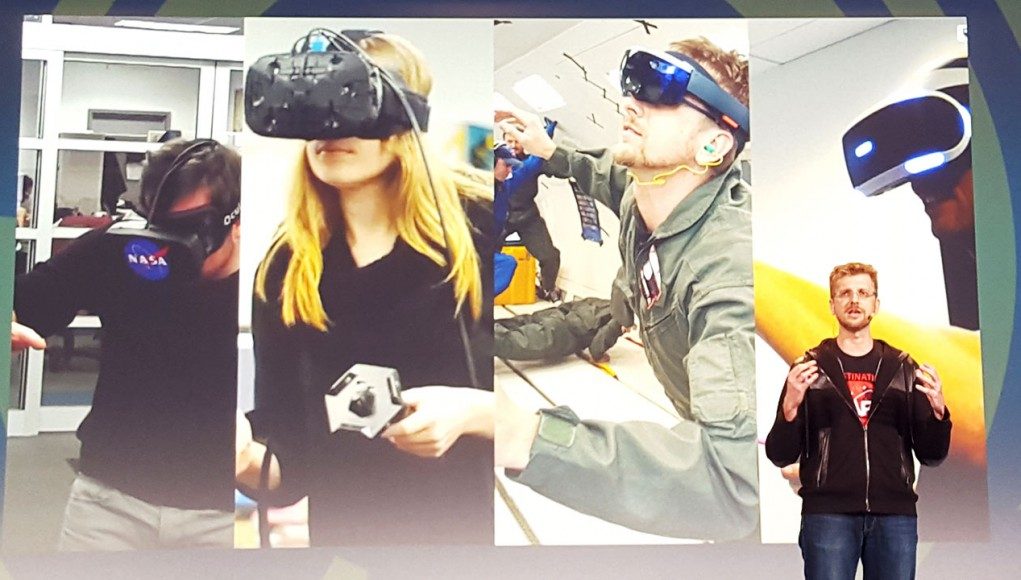 Dr. Jeff Norris works on Mission Operations Innovation at the Jet Propulsion Laboratory Ops Lab. They’ve been partnering with all of the major virtual reality & augmented reality companies to accelerate the progress in space exploration, designing spacecraft, and assisting astronauts with augmented expert assistants. Jeff was at the Unity AR/VR Vision Summit where he provided an inspiring speech about how NASA is using all of the latest immersive technologies to explore and discover more about our Universe.
Dr. Jeff Norris works on Mission Operations Innovation at the Jet Propulsion Laboratory Ops Lab. They’ve been partnering with all of the major virtual reality & augmented reality companies to accelerate the progress in space exploration, designing spacecraft, and assisting astronauts with augmented expert assistants. Jeff was at the Unity AR/VR Vision Summit where he provided an inspiring speech about how NASA is using all of the latest immersive technologies to explore and discover more about our Universe.
LISTEN TO THE VOICES OF VR PODCAST
What was striking to me was when Jeff posted a photo in his presentation with astronauts and scientists using everything from the Oculus Rift to HTC Vive to Sony PlayStationVR to Microsoft HoloLens. Jeff is grateful that there’s already a diversity of different VR platforms and input devices that each have the different strengths and weaknesses.
They’re using virtual reality applications when they want to completely immerse people into exploring other worlds, such as simulations of environments but also for the future of telepresence robots that explore places in space that are too harsh to send humans. He calls these ‘telenauts’ that may end up having more capabilities than actually being there. While there will always be advantages to actually being there, going into the sun or onto the surface of Jupiter may just be simply impossible for someone to go to. With virtual reality technology, then we’ll be able to expand the places where scientists can explore and use their natural procedures of observation, research, and discovery.
NASA is also using augmented reality systems like the Microsoft HoloLens on the International Space Station to help astronauts perform hardware maintenance that may be too difficult for them to do on their own. For example, instead of reading an instruction manual filled with complicated descriptions of what to do, they’ll be able to use the updated Skype technology to have a subject matter expert project holograms and talk them through the process of performing maintenance.
Hearing about Jeff talk about some of the most applications that they’re using virtual and augmented reality for are some of the most exciting. NASA is tapping into the innate desire of humans to explore, learn, and discover. NASA has been already been using virtual reality for training applications for decades, and they’ve been early adopters of the latest consumer-level HMDs because they wanted to make sure that they could give feedback to the hardware manufacturers to ensure that it would be functional for how they wanted to use it.
Whether it’s applications for designing spacecraft, helping astronauts do their work on the International Space Station, or exploring Mars and beyond, NASA is using VR and AR to satisfy our innate desires for exploration and discovery.
Become a Patron! Support The Voices of VR Podcast Patreon
Theme music: “Fatality” by Tigoolio







